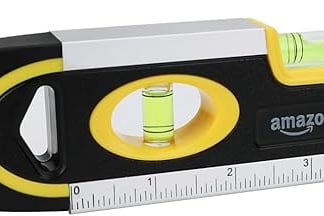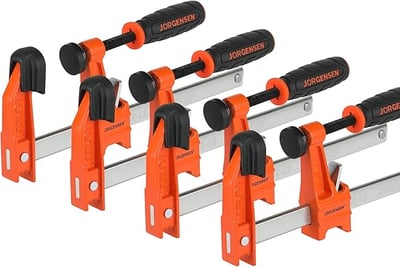9 Essential Tools Every DIY Homeowner Needs
6 min read


Introduction to DIY Homeowner Tools
For any homeowner, possessing a fundamental set of tools is essential not just for daily maintenance but also for empowering DIY projects. Home improvement can often be a daunting task, especially for those who may not have prior experience. However, having the right instruments at hand can significantly simplify various tasks, making both repairs and enhancements much more manageable.
Investing in basic tools enables homeowners to take on a spectrum of projects—from assembling furniture to fixing leaky faucets and even executing more extensive renovations. A well-equipped toolkit facilitates quicker and more efficient repairs, allowing individuals to address minor issues before they escalate into larger, costly ones. By tackling these projects independently, homeowners can not only save money but also gain valuable skills and a sense of accomplishment.
The world of DIY has become increasingly popular, with homeowners embracing the idea of engaging in hands-on creation and repair. This interest is not merely a trend; it reflects a growing desire for self-sufficiency and personalization in home environments. By harnessing the power of essential tools, homeowners can bring their creative visions to life, making informed modifications that reflect their tastes and needs. Additionally, the satisfaction that comes from completing tasks independently can instill confidence and inspire further exploration into more complex projects.
As we delve deeper into the tools necessary to succeed in DIY endeavors, it is invaluable to remember that every tool serves a distinct purpose. Understanding how to utilize these tools effectively helps in not only executing tasks with precision but also in ensuring safety during projects. Armed with the right knowledge and tools, any homeowner can confidently navigate their DIY journey and transform their living space more creatively and affordably.
The Essential Tool List
For any DIY homeowner, possessing a reliable set of tools is essential for successfully completing various projects around the house. Below is a comprehensive list of nine fundamental tools that every homeowner should have in their toolkit, along with a brief description of their functions, common applications, and tips for selection.
1. Cordless Drill: This versatile tool is essential for drilling holes and driving screws. A cordless drill offers mobility without the hassle of cords, making it suitable for both indoor and outdoor tasks. When selecting a cordless drill, consider battery life and torque settings to suit different projects.
2. Tape Measure: An indispensable tool for any measurement task, a tape measure allows homeowners to achieve precise dimensions. Opt for a measuring tape featuring both metric and imperial units for flexibility, and ensure the blade is sturdy and easy to read.
3. Level: To ensure that shelves, frames, and furniture are perfectly aligned, a spirit level is crucial. Choose a durable model with markings for both horizontal and vertical leveling.
4. Utility Knife: This tool is perfect for cutting a variety of materials, such as cardboard, drywall, and rope. Select a utility knife with a retractable blade for safety and easy replacement.
5. Screwdriver Set: A basic set including both flathead and Phillips screwdrivers is necessary for a multitude of repairs. Look for ergonomic grips and magnetic tips to enhance usability.
6. Hammer: Essential for driving nails into wood and other materials, a claw hammer is often recommended. Ensure the hammer's weight suits your comfort level for effective use.
7. Pliers: This multi-functional tool is useful for gripping, twisting, and cutting wire. A combination of slip-joint pliers and needle-nose pliers will cover a wide range of tasks.
8. Saw: A hand saw or power saw is required for cutting wood and other materials. When choosing a saw, consider the type of projects you tackle most often; a miter saw is ideal for angled cuts, while a circular saw offers speed and efficiency.
9. Safety Gear: Personal protective equipment, such as goggles and gloves, is critical to ensure safety during any DIY endeavor. Invest in high-quality safety gear to minimize risks when working with tools.
By equipping yourself with these essential tools, you can confidently undertake various home improvement projects and repairs, enhancing your living space while gaining valuable skills in the process.
Why These Tools are Must-Haves
For any DIY homeowner, equipping oneself with essential tools is not merely a recommendation; it is a necessity. The right tools significantly enhance the ability to tackle various projects efficiently and effectively. Each tool serves a specific purpose, and their combined functionality empowers homeowners to handle tasks ranging from simple repairs to complex renovations.
One crucial aspect of having these tools at your disposal is the increased efficiency they bring. Consider a basic toolbox that includes a hammer, screwdriver, and tape measure. These basic yet essential tools allow homeowners to perform numerous tasks without tedious trips to the local hardware store. Each tool can be applied to a variety of projects, thereby saving both time and resources. Moreover, investing in quality tools ensures durability, reducing the frequency of replacements and ultimately saving money in the long run.
Improved project outcomes are another significant advantage of using the right tools. A well-equipped homeowner is more likely to achieve successful results. For instance, using a level and a square ensures that installations are straight and structurally sound. This leads to not only aesthetically pleasing results but also enhanced safety in projects such as shelving or home improvements. The precision afforded by using the proper tools can make a notable difference between a project that requires rework and one that meets expectations the first time around.
Lastly, confidence plays a vital role in the DIY experience. Having the correct tools equips homeowners with the skills and confidence to undertake projects they may have previously deemed too daunting. This sense of empowerment is invaluable, fostering a mindset of continuous learning and growth in the realm of home improvement. Therefore, embracing these essential tools not only facilitates immediate tasks but also enriches the overall journey of DIY homeowners.
Building Your Toolkit: Getting Started
Embarking on your DIY journey can be both exciting and daunting, particularly when it comes to assembling the right tools. For every homeowner looking to tackle home improvements, starting with a well-thought-out toolkit is essential. This toolkit will not only serve as your reliable companion for various projects but also help you cultivate skills over time. To begin, prioritize accumulating a few basic tools that will allow you to handle a range of tasks effectively.
Start with foundational items such as a hammer, screwdrivers (both flathead and Phillips), and a tape measure. These essentials form the backbone of your toolkit, allowing you to address common household repairs and improvements. As you become more comfortable with these tools, gradually expand your collection by adding a level, a power drill, and pliers, which will enable you to engage in slightly more complex projects.
Budget is a crucial factor for many DIY enthusiasts. To build your toolkit without financial strain, consider purchasing tools gradually over time. Look for sales, discounts, or even local tools swapping events. This strategy ensures that you're not overwhelmed by costs while still acquiring the necessary items. Many stores offer budget-friendly options and occasionally, you can find unique second-hand tools that may serve your purposes just as well as brand-new models.
Additionally, applying your new tools to beginner-friendly projects is a wonderful way to grow your confidence. Simple tasks such as hanging shelves, creating a decorative frame, or building a small birdhouse allow you to practice using your tools while simultaneously enhancing your living space. With every project completed, you’ll not only refine your skills but also foster a sense of accomplishment that will motivate you to take on larger and more complex endeavors in the world of DIY.











